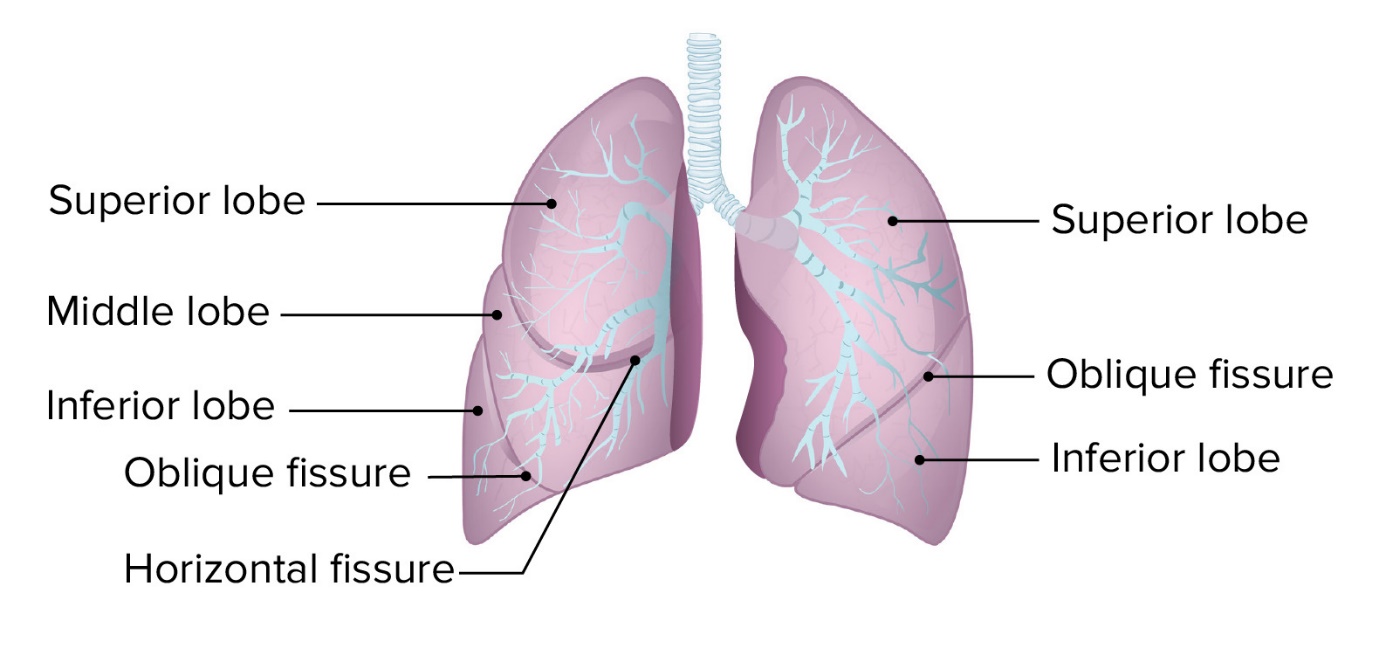The nurse is palpating a client's anterior chest wall and notices a course, crackling sensation over the skin surface. Which of the following should the nurse suspect from her findings?
Friction rub
Tactile fremitus
Crepitus
Adventitious sounds
The Correct Answer is C
A. Friction rub:
A friction rub is a grating or rubbing sound or sensation heard or felt during auscultation or palpation. It occurs when inflamed pleural or pericardial surfaces rub against each other during breathing or heartbeats, respectively.
B. Tactile fremitus:
Tactile fremitus refers to the palpable vibrations transmitted through the bronchopulmonary tree to the chest wall as the patient speaks. It is assessed by placing hands on the patient's back while the patient speaks certain words. Increased tactile fremitus can occur in conditions with lung consolidation, such as pneumonia.
C. Crepitus:
Crepitus is a crackling or grating sensation felt under the skin or heard when the ends of a broken bone rub against each other. It can also occur when air leaks into subcutaneous tissue, leading to a crackling sensation upon palpation.
D. Adventitious sounds:
Adventitious sounds refer to abnormal lung sounds heard during auscultation. These sounds include crackles (rales), wheezes, rhonchi, and pleural friction rubs. Adventitious sounds can indicate various respiratory conditions, such as pneumonia, bronchitis, or asthma.
Nursing Test Bank
Naxlex Comprehensive Predictor Exams
Related Questions
Correct Answer is D
Explanation
A. Perform the confrontation test:
The confrontation test is a basic visual field screening test. It assesses the peripheral vision by having the patient cover one eye and the examiner covers the opposite eye. The patient and the examiner then bring their fingers into the visual field from the periphery, and the patient indicates when they see the fingers.
B. Ask the patient to read the print on a handheld Jaeger card:
Jaeger cards are used for near vision testing. The patient reads progressively smaller print to assess their near vision acuity.
C. Determine the patient's ability to read newsprint at a distance of 12 to 14 inches:
This method assesses near vision. It is often used informally in clinical settings, where the patient is asked to read a newspaper or similar print at a comfortable reading distance.
D. Use the Snellen chart positioned 20 feet away from the patient:
The Snellen chart is a standardized chart used for visual acuity testing. It is placed 20 feet away from the patient, and the patient is asked to read the letters or symbols on the chart with one eye covered at a time.
Correct Answer is A
Explanation
A. Consists of two lobes.
This statement is correct. The left lung consists of two lobes: the upper lobe and the lower lobe. The right lung, not the left lung, has three lobes: upper, middle, and lower lobes.
B. Primarily consists of an upper lobe on the posterior chest.
This statement is not accurate. The upper lobe of the left lung is present in the anterior and posterior parts of the chest. It is not limited to the posterior chest.
C. Is shorter than the right lung because of the underlying stomach.
This statement is not correct. The left lung is not shorter due to the underlying stomach. The left lung is slightly smaller than the right lung to accommodate the space for the heart, but this size difference is not due to the stomach.
D. Is divided by the horizontal fissure.
This statement is not accurate. The left lung is not divided by the horizontal fissure. The horizontal fissure is a feature of the right lung, not the left lung. The left lung is divided by the oblique fissure into the upper and lower lobes

Whether you are a student looking to ace your exams or a practicing nurse seeking to enhance your expertise , our nursing education contents will empower you with the confidence and competence to make a difference in the lives of patients and become a respected leader in the healthcare field.
Visit Naxlex, invest in your future and unlock endless possibilities with our unparalleled nursing education contents today
Report Wrong Answer on the Current Question
Do you disagree with the answer? If yes, what is your expected answer? Explain.
Kindly be descriptive with the issue you are facing.
